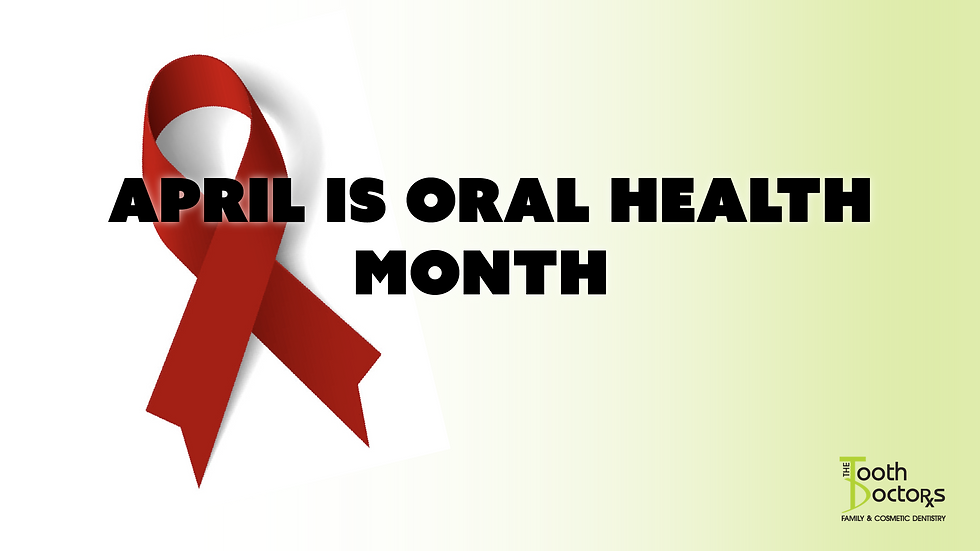Teething 101
- The Tooth Doctors

- Aug 3, 2017
- 3 min read
by Katlynn
As the mom of a 2 year old I am all too familiar with teething. Luckily, we are beginning to see the light at the end of the tunnel, but oh what a journey it has been. When our little one turned 6 months we were feeling so great! We had one very happy baby. We had a routine down and things were beginning to get back to normal. She had been drooling for months, and we thought that may have been all there was to it, but teething was so much more than I expected.

I was lucky enough to have an easygoing baby who only fussed when something was truly wrong, so when the fussiness and feeding strike began, I could begin to imagine how much it was affecting her. I was overwhelmed by all of the different advice I was receiving on how to deal with teething that I didn’t know where to begin. I hope to give you some insight as a dental professional to understand a little bit more of what your little one is experiencing and how you can help. What is teething? Teething is the process of the first set of “baby teeth” erupting through the gums. These teeth begin to form even before the baby is born; as they develop they push up through the jaw bone into the gum tissue where they eventually erupt through the gums. What age do babies start teething? On average teething begins around 6 months but can also be seen as early as 1-2 months or in some case not until over a year old. These variations can be completely normal and are not usually an indication of anything serious. Here is a list below of estimated time ranges and what order you can expect the baby teeth to erupt in Central Incisors: 5-10 months Lateral Incisors: 7-12 months Canines: 16-20 months First Molars: 11-18 months Second Molars: 20- 30 months What to keep an eye out for Eruption cysts – On some occasions when a tooth is breaking through the gums, it will develop a large discolored swelling above it. This is known as an eruption cyst. If an eruption cyst is causing significant pain or difficulty in chewing and eating, a dentist or physician can make a small incision in it which will allow it to decompress and go away more quickly. But in most cases these types of cysts will resolve on their own. Teething Myths; when to seek professional medical help -Tugging/playing with ears: You may have heard that teething causes irritation of the ears , it is far more likely to be related to nothing at all or a possible ear infection. -Fever: One of the most popular myths of teething is that it will cause a fever. There is some research that shows temperature may rise approximately 0.1 degrees, however it should not increase enough to cause a fever. -Diarrhea/ Diaper rash: All research has shown these symptoms to have no correlation with teething. What you can do to help Some things you can do to help make your little one more comfortable include… -Cold teething toys that your child can chew on. There are a variety of different options available, keep a stash in the freezer so you can always have one ready to go. -Frozen fruit or veggies; add whatever fruit your baby likes (peaches, bananas, apple, sliced cucumber etc.) in a mesh feeder and put it in the freezer. The cold fruit will help numb their sore gums and the sweet juice from the fruit will keep them satisfied. -Homeopathic teething tablets; teething tablets are one of the most common teething remedies and although they are safe for babies they should still be used with caution. -Over the counter pain medications. Tylenol and Advil are the most common. It is important to remember that teething is a perfectly natural process that everyone goes through. A cold teething toy is the best and least dangerous way to help ease your child’s teething pain. It also doesn’t carry any of the risk that goes along with giving medications to an infant.



Comments